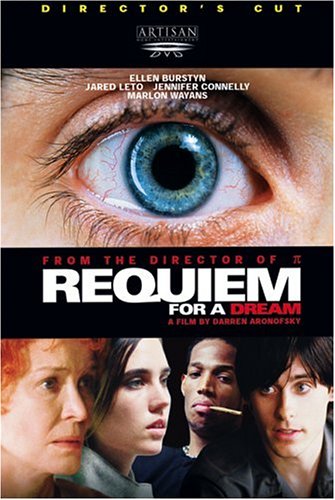All Nonfiction
- Bullying
- Books
- Academic
- Author Interviews
- Celebrity interviews
- College Articles
- College Essays
- Educator of the Year
- Heroes
- Interviews
- Memoir
- Personal Experience
- Sports
- Travel & Culture
All Opinions
- Bullying
- Current Events / Politics
- Discrimination
- Drugs / Alcohol / Smoking
- Entertainment / Celebrities
- Environment
- Love / Relationships
- Movies / Music / TV
- Pop Culture / Trends
- School / College
- Social Issues / Civics
- Spirituality / Religion
- Sports / Hobbies
All Hot Topics
- Bullying
- Community Service
- Environment
- Health
- Letters to the Editor
- Pride & Prejudice
- What Matters
- Back
Summer Guide
- Program Links
- Program Reviews
- Back
College Guide
- College Links
- College Reviews
- College Essays
- College Articles
- Back
Requiem for a Dream MAG
Drugs are bad. Don't do them. The world would be a better place if everyone felt this way. Of course, responsibility rests fundamentally on the shoulders of those taking drugs, but many who do them are motivated by undesirable situations. Drug abuse and its effects are exposed perfectly in Darren Aronofsky's 2000 film “Requiem for a Dream.”
The movie revolves around Sara and Harry Goldfarb (Ellen Burstyn and Jared Leto), Harry's girlfriend, Marion (Jennifer Connelly), and best friend Tyrone (Marlon Wayans), and their self-destruction due to drugs.
All play the part of neurotic drug addicts incredibly well. Leto's Bostonian accent conveys hollow pain. Burstyn, a lonely mother longing to please her son, leaves the viewer with a true sense of empathy for those suffering with body dysmorphia.
The movie's locations are desolate, dreamy, and beautiful. Images of cerulean docks are constantly flickering across the screen in an almost postmodern way, and blue becomes a central motif for the characters' self-destruction. Director Aronofsky uses bodycams, montages, and characteristic short shots. The characters look gritty and rough.
The soundtrack by Clint Mansell reflects the obsessive and neurotic feel of the film and its characters. With scrapes, scratches, and dissonance, the music becomes a cacophonous shell, trapping the viewer and making the images even more powerful. The plot is pushed forward by the symphonic track “Lux Aeterna,” which appears in many variations.
The only negative here is that, while the film is a unique work of art, some scenes may be too graphic for many viewers. But the reality is that drug addiction, particularly heroin, isn't pretty. Aronofsky retains realism and believability where many films on the topic – like Pink Floyd's “The Wall” – descend into obscurity.
Overall, the film provides an artistic and original view of drug addiction. If teens viewed this movie in school instead of mediocre, unrealistic drug education films, they would perhaps be less likely to try drugs.
Similar Articles
JOIN THE DISCUSSION
This article has 2 comments.


6 articles 0 photos 22 comments
Favorite Quote:
Beneath this mask there is more than flesh. Beneath this mask there is an idea, Mr Creedy, and ideas are bulletproof.